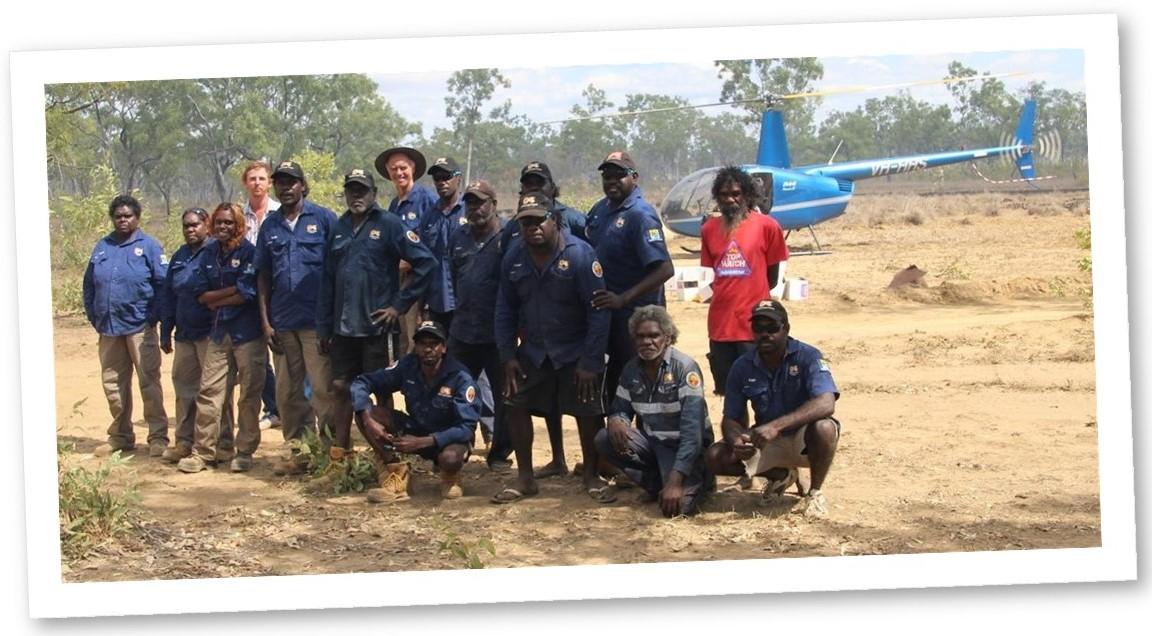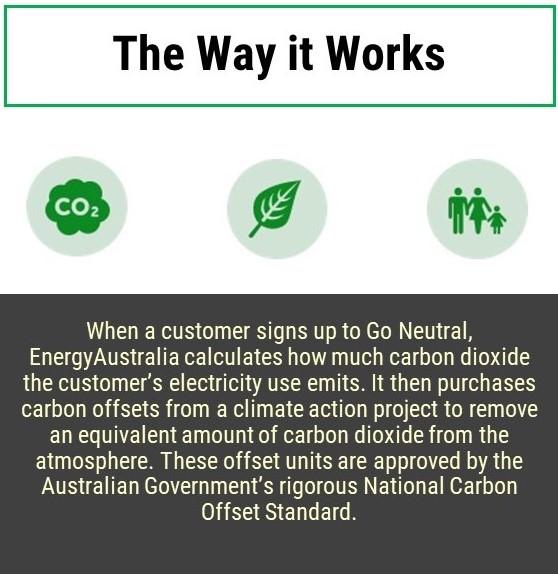Collective Power for Good: EnergyAustralia Customers Go Neutral
EnergyAustralia introduced the Go Neutral programme in 2016 to encourage customers to combat climate change by offsetting the carbon emissions of their electricity use, at no cost to them.
More than 145,000 people have signed up for the initiative since its launch. Last year, in an impressive display of collective power, EnergyAustralia customers offset around 546,000 tonnes of carbon emissions – three times the offset achieved in 2017 and the equivalent of taking more than 170,000 cars off the road for a year1. The programme underscores EnergyAustralia’s commitment to combating climate change.
Customers who sign up for Go Neutral can support a range of emission reduction initiatives that both offset emissions and bring about positive economic and social benefits, including forest regrowth projects in Australia, landfill waste management programmes in Brazil, and the replacement of incandescent light bulbs with energy-saving bulbs in India.
Here are just some of the climate action projects around the world that the Go Neutral programme supports:
Mainland China: Daan Laifu Wind Farm
The 25 turbines of Daan Laifu Wind Farm in Jilin province, northern China, generate enough electricity to power scores of factories and thousands of homes. Although the farm sells the electricity it generates back to the local energy grid, the price is not high enough to turn a profit, so it relies on extra income from selling carbon offset units to EnergyAustralia. By purchasing these units, customers help safeguard the future of renewable energy in China while improving the air quality in Jilin where large amounts of low-grade coal are burned to power the industrial sector.
India: Bachat Lamp Yohana Project
Incandescent light bulbs, still widely used in India, consume more energy and increase demand on power stations. The Bachat Lamp Yojana renewable lighting project, which involves the replacement of old bulbs with efficient energy-saving ones, not only benefits the environment but also helps low-income families in India save electricity costs. So far, the project has distributed 22 million light bulbs in several regions. Households save around 10% on power bills after installing the new bulbs.
Brazil: CTR Rio Landfill
The Santa Rosa Centre for Solid Waste Treatment (CTR Rio) is a landfill site near Rio de Janeiro which has been modified recently to reduce the amount of methane it emits. Landfills create huge amounts of methane gas, which has around 30 times the global-warming potential of carbon dioxide (CO2). Worryingly, many landfills in Brazil are not enclosed, so the methane emitted simply escapes into the atmosphere. CTR Rio has put a huge lid on its landfill with a pipe coming of the top and has begun burning off the methane to convert it into less-damaging CO2.
New South Wales, Australia: Urisino Ecosystem Project
In the far west of New South Wales, the former Urisino cattle station covering an area of 80,000 hectares is being returned to its natural state through a careful combination of land-clearing, replanting, and monitoring. Greenhouse gas emissions are being reduced through this process in two key ways: The replanting of native vegetation which absorbs carbon more effectively, and the removal of non-native animals including a large population of methane-producing feral goats and horses.
Northern Territory, Australia: Arnhem Land Fire Abatement
Bushfires sweep across Australia every summer, many of them burning uncontrollably for weeks and producing massive amounts of carbon dioxide. Aboriginal rangers in the Northern Territory are fighting back. They are combining age-old wisdom with helicopter surveillance to expertly carry out hazard-reduction burning and reduce Australia’s carbon emissions. The Arnhem Land Fire Abatement project works across a vast swathe of pristine native-title land and has already achieved a marked reduction in Australia’s bushfire-related carbon emissions. The non-profit initiative is staffed entirely by the residents from Aboriginal communities.
To learn more about CLP’s connection with society, please check out the latest issue of CLP.CONNECT.
1. Calculated using a factor of 3.2 tonnes/passenger car/year, based on 2016 Australian passenger vehicle numbers (Australian Bureau of Statistics Motor Vehicle Census) and 2016 greenhouse gas emissions for cars (National Greenhouse Gas Inventory AEGIS database).




